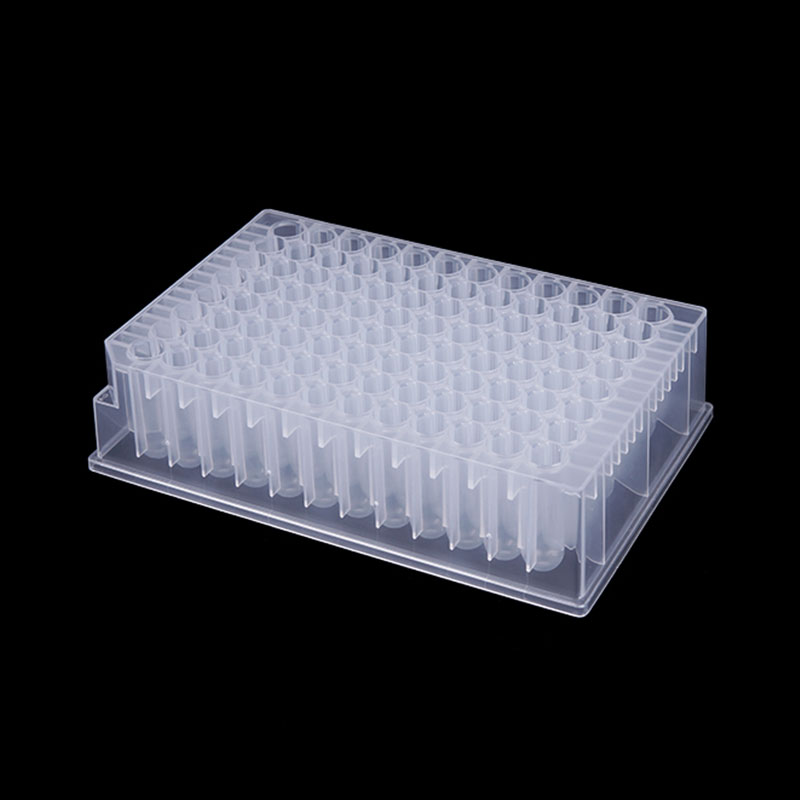Stacking Up Success: Deep Well Plate Stackability for Storage and Handling
2023-11-06
In the dynamic world of laboratory research, efficient organization and storage of samples and reagents are essential for success. Deep well plates, including the versatile 1.2ml round U-bottom design, play a crucial role in this process. A key consideration for researchers is whether these plates are stackable, as this feature greatly influences their ease of storage and handling. In this blog, we will explore the details of deep well plate stackability and how it enhances the efficiency of laboratory operations.
The Need for Stackability
Deep well plates are a cornerstone of laboratory work, serving various purposes such as sample storage, sample processing, and high-throughput screening. Ensuring that these plates are stackable is vital for several reasons:
1. Space Efficiency: Laboratories often deal with limited bench space. Stackable plates make efficient use of available space, allowing researchers to store a greater number of samples without clutter.
2. Organized Storage: Stacking deep well plates neatly organizes samples, making it easier to locate and access specific wells when needed. This organization is particularly crucial in high-throughput experiments and when handling numerous samples.
3. Reduced Contamination Risk: Neatly stacked plates reduce the risk of contamination. When plates are stacked securely, they are less likely to be accidentally knocked over or tampered with, ensuring the integrity of the samples.
4. Ease of Handling: Stacked plates are easier to transport and handle, streamlining various laboratory processes. Whether transferring plates to a centrifuge or moving them between workstations, stackable plates simplify these tasks.
Design for Stackability:
The stackability of deep well plates depends on their design and features. Here are some factors to consider:
1. Rim Design: Deep well plates with a reinforced rim or skirt are often more stackable. The rim provides stability and prevents plates from sliding or slipping when stacked.
2. Interlocking Feet: Some deep well plates are designed with interlocking feet, which ensure that plates securely fit together when stacked. This feature prevents lateral movement and misalignment.
3. Lid Compatibility: The design of the lid or sealing options can affect stackability. Ensure that the chosen sealing method, whether adhesive films or screw caps, is compatible with stacked plates.
4. Sloped or Square Wells: The shape of the wells can influence stackability. Plates with square wells are generally more stackable than those with sloped U-bottom wells, as the latter may be prone to nesting difficulties.
Handling Precautions:
While stackability enhances the efficiency of deep well plates, it's important to consider the following precautions when handling stacked plates:
- Labeling: Clearly label stacked plates to prevent confusion and to ensure accurate identification of samples or experiments.
- Stability: Ensure that stacked plates are stable and secure. Avoid stacking them too high, which could lead to instability.
- Weight Distribution: When moving stacks of plates, distribute the weight evenly to prevent accidents.
- Contamination Control: Maintain strict aseptic techniques and ensure that the stackable plates remain sterile to avoid contamination risks.
Conclusion
Deep well plates, like the 1.2ml round U-bottom design, are versatile tools in the laboratory. Their stackability is a valuable feature that optimizes storage and handling efficiency. Researchers can maximize their lab space, stay organized, and reduce contamination risks by choosing stackable plates with the appropriate design features. When managed with care and attention to detail, stackable deep well plates contribute to the smooth and successful execution of experiments and research in the dynamic field of laboratory science.



